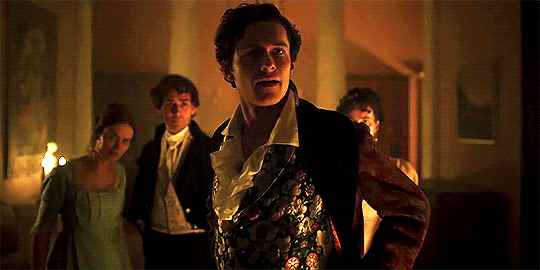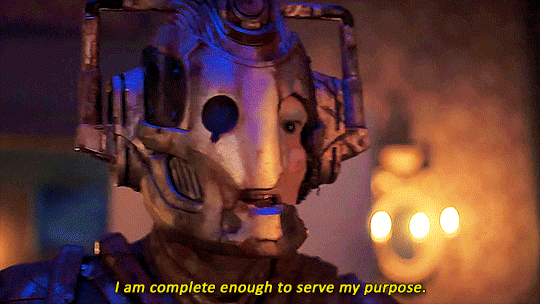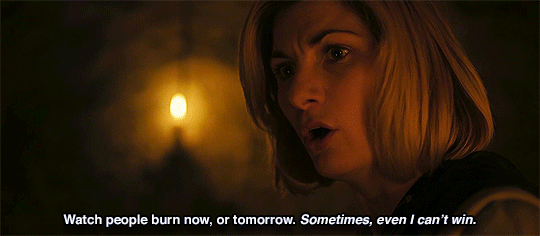The Thirteenth Doctor continues to excel in her historical episodes, this time around in Switzerland, 1816. The fam visits the Villa Diodati on the night that inspired The Vampyre by Polidori and, more famously, Frankenstein by Mary Shelley. They get more than what they signed up for when the Lone Cyberman shows up and Jack’s warning becomes impossible to heed. “The Haunting of Villa Diodati” combines Gothic sci-fi with a modern one and leads us into the series 12 finale. On top of an exciting story, the acting and music have rarely been better this series than here.
Wet, ungenial summer night
It’s always fun when Doctor Who takes a well-known historical event and puts its own spin on it. Sure, there’s always a danger of contradicting history and DW’s own canon: Mary Shelley has previously been an Eighth Doctor companion in Big Finish Audios. But when done right, we can overlook such issues and appreciate what the latest story adds to an event. At times, such episodes provide explanations for events in history, like the burning of Rome in “The Romans”, or simply say that aliens did it.
“The Haunting” strikes a balance between not daring enough and unnecessarily complicated. There were moments when I thought the episode might go too far and explain exactly how Mary Shelley got the idea for Frankenstein. Luckily, Shelley still gets to think of the idea herself while DW offers its own unique interpretation as to her inspiration.
Obviously, Frankenstein wasn’t born because Shelley faced down a half-baked Cyberman and called him a modern Prometheus. Pseudo-historical episodes are never going to offer plausible explanations but in cases such as Frankenstein‘s, we don’t need an explanation. In fact, “The Haunting” could have been dangerously close to lessening the impact of such a crucial event in the history of literature. If it simply said “aliens did it”, the magic would have been gone.

Think of the bootstrap paradox, as explained by the Twelfth Doctor: if you go back in time and write Beethoven’s music, where did that music originally come from? There’ve been plenty of instances in Doctor Who when time travel made the creative process all wibbly-wobbly, and writer Maxine Alderton could have done the same with Shelley and her modern Prometheus. The Doctor or any of the companions could have suggested the idea of Frankenstein and boom, paradox: who wrote Frankenstein? Well, the work itself would still be Shelley’s, but the idea would be part of a paradox.
What actually ends up happening in Villa Diodati is much better. References to what will eventually become Frankenstein are scattered throughout the episode and we witness Mary Shelley’s creative process as she makes sense of what’s happening around her. One of the best scenes of the episode comes when Mary stands up to the Cyberman and attempts to reason, to empathize with it. As I said, there was a danger of the episode going too far and overexplaining Frankenstein, or even references being forced and out of place. This scene gives us just enough in terms of tension within the context of the story and a fictional genesis of one of literature’s most famous monsters.
It’s a bit of a shame that Polidori’s The Vampyre doesn’t get the same recognition. It’s undoubtedly less well-known than Shelley’s work but a milestone of literature nonetheless, as the progenitor of the modern vampire genre. But that’s more of a side note, and the context of the episode easily affords us the explanation that both monsters were inspired by the Lone Cyberman.
In terms of the historical characters themselves, Alderton’s extensive research paid off. Helping her case is an excellent cast who bring to life these 18th-century figures as if they were the youth of today. Lili Miller as Mary and Jacob Collins-Levy as Lord Byron stand out. The former’s Cyberman scene is one for the ages and the latter is delightful as the young, dashing, reckless but cowardly poet. His relentless but futile pursuit of “Mrs. Doctor” is comical but thankfully doesn’t come across as too creepy.
Even better is the role given to Claire Clairmont, Mary’s step-sister played by Nadia Parks. Historically, she’s viewed as little more than one of Byron’s many lovers but here she gets to put the man behind her. Lewis Rainer shows up quite late into the episode as Percy Shelley but makes the best of his scenes and Maxim Baldry completes the cast as Polidori. All in all, a solid ensemble who bring out a playful and human side of people who lived 200 years ago.
The Lone Cyberman
In a not entirely unpredictable turn of events, episode 8 lays the foundation for the finale. The events of Villa Diodati are linked to the Lone Cyberman Jack Harkness warned the fam about in “Fugitive of the Judoon“. Patrick O’Kane plays Ashad, or someone who used to be Ashad and is now an incomplete but steadfast Cyberman.
Ashad is the best use of the Cybermen concept that we’ve seen in a long while. He’s not a complete Cyberman but if anything that only makes him more threatening. He still feels emotions to an extent but that makes him even more hostile. As Mary points out, he doesn’t kill her son but this doesn’t make him more human. O’Kane is chilling in his aforementioned scene with Mary and that alone makes me want to see him return in the upcoming two episodes.

In a way, how “The Haunting” made use of a classic villain reminded me of the Ninth Doctor episode “Dalek”. I still consider that episode to be the best Dalek one because it managed to make the eponymous monster truly terrifying. When enemies like the Daleks and the Cybermen return so often it’s easy for them to become a parody of themselves. It’s hard to take them seriously as a threat when they’re always defeated and they always keep returning. In “Dalek”, writer Robert Shearman reintroduced the Dalek race through just one of its race and wreaked havoc like no other.
In “The Haunting”, it’s the Lone Cyberman that Jack warned the fam about. It’s this one Cyberman who inspires Gothic horror and who makes the Doctor snap. It’s such a good use of a well-established but overused villain. Not to make judgments on the final to episodes two early but I find it hard to believe that the army of Cybermen there will be scarier than this lone one. Less is more fully applies here, or fewer is more to be exact. Still, Ashad made me cautiously optimistic about how the Cybermen will be handled in the series finale, now that there’s so much hype around them.
Going back to Mary Shelley once more, it’s also worth noting how old sci-fi meets the new in “The Haunting of Villa Diodati”. Frankenstein is the progenitor of the science fiction genre so it’s no wonder that Doctor Who keeps returning to Shelley. The Cybermen being the inspiration for Frankenstein’s monster is a nice way of bringing the two together without falling into the bootstrap paradox. There’s a reason why the audios had a similar idea.
Not a flat team structure
We’ve been building up to this for a while but due to the Lone Cyberman showing up, the Doctor finally snapped. Jodie Whittaker is always fantastic but here she gets to show another side of her Doctor. The fam is faced with a grave decision and it becomes painfully clear that the Doctor is simply not like them. Thirteen has been an easygoing, relatable if socially awkward Doctor so far but when the stakes are this high, the lie can’t go on.
It’s not only Thirteen’s outburst that we’ve been building to. The fam has been seeing a new side of her this season and we’ve followed as she falls from the pedestal that Yaz, Ryan, and to a lesser extent Graham put her on. Not that the Doctor ever pretended to be perfect, but she pretended that her past was behind her. She pretended that the Time War and the Master and all that pain was gone. The fam was a fresh start in series 11, but series 12 has deliberately been deconstructing that and right before the finale we see a breaking point.
At the end of the episode, the fam still decides to go with Thirteen and fix the mistake created by not heeding Jack’s warning, but it’s very clear that something changed here and they’re gonna have to face the consequences. Provided that everyone makes it to the end of the season in one piece, I doubt that the fam will remain as they are for series 13. Even if Yaz, Ryan, and Graham all decide to continue travelling with the Doctor, the status quo changed. We can only hope that between the Cybermen and the Timeless Child prophecy the next two episodes will have enough time to deal with all this.
The team had a chance for more lighthearted moments as well and those were very much appreciated. Yaz’s conversation with Claire was particularly interesting, though that one was heavy with Yaz’s evolving view of the Doctor. In any case, splitting up allowed the companions to mix with the guest characters and all the interactions worked well.

All in all, I thoroughly enjoyed “The Haunting of Villa Diodati”. It mixed Gothic horror with the modern monster of the Cyberman well, we had an excellent cast and it was much more than just a filler that leads up to the grand finale. Even without the context of the Lone Cyberman, this episode stands out in series 12 as a great adventure. It’s arguably not a standalone exactly because it leads into the finale but if we would consider it one, it’s quite probably the best of the season. Even more historical episodes for the Thirteenth Doctor in series 13, please.

